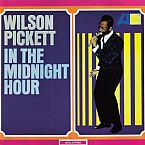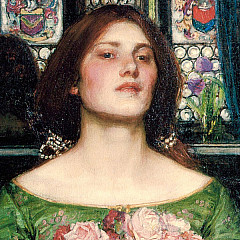In The Midnight Hour

Songfacts®:
- In this song, Pickett is waiting till midnight to meet his girl for a romantic rendezvous. It's not clear if he's doing it at that hour to stay undetected, or if it's just more romantic. Either way, his love will come tumbling down.
- Pickett had his first success with a song called "I Found a Love," which he wrote and performed with his group The Falcons in 1962. That song reached #75 on the Hot 100, and two years later Atlantic Records signed him to a solo deal. His first single with the label, "Come Home Baby" was recorded in New York with producer Bert Berns, and it went nowhere. For a change of sound and scenery, Atlantic sent him to Memphis to record his next single at Stax Records (which had a distribution deal with Atlantic) using their house band. These sessions produced "In The Midnight Hour," which became Pickett's breakout hit. He went on to become a soul music legend and was inducted into the Rock and Roll Hall of Fame in 1991.
- Pickett wrote this with guitarist Steve Cropper, who wrote and produced many of the soul classics for Stax Records. Cropper played guitar on the Stax session band, Booker T. and The MGs.
Cropper recalled to Uncut in 2015: "I say in my shows that playing the guitar is real simple, you just follow the dots - the dots on neck on every guitar are in the same place. That's how I came up with the intro for this. They go, It couldn't be that simple,' then all of them go home and get their guitars out and go, 'Wow, it is!'" - Cropper and Pickett wrote this at the Lorraine Motel, which was located near the Stax studios in Memphis. On April 4, 1968, Martin Luther King Jr. was shot there while standing on the balcony.
- The title came from something Steve Cropper heard Wilson singing on one of his gospel tracks. Said Cropper: "Wilson says he wrote the song but, you know, I listened to some old church stuff he sang on and he was singing, 'See my Jesus in the midnight hour, see my Jesus in the midnight hour," over and over, and I said, 'I'm gonna see my girl in the midnight hour,' what about that?'"
-
- A song about a guy, a girl, and the midnight hour seems like it would head in a risqué direction (at least by 1965 standards), but it doesn't even hint at sex - Pickett just wants to look in her eyes and hold her tight. By keeping it clean, the song had a better chance of getting airplay, but according to Steve Cropper, that wasn't a factor. "Whether we had the cleanliness in mind, I would say no," he told Songfacts. "It was not on our head."
- This was produced by Jerry Wexler with Steve Cropper, Al Jackson and Donald "Duck" Dunn from the Stax house band Booker T. & the MG's playing on the track (keyboard player Booker T. Jones didn't participate in the session). Booker T. and The MGs played on many soul classics, and even had a hit of their own with "Green Onions" in 1962, and they also backed up Pickett's hero Otis Redding on many tracks.
The personnel on this track was:
Guitar: Steve Cropper
Drums: Al Jackson
Bass: Donald "Duck" Dunn
Piano: Joe Hall
Tenor Sax: Andrew Love, Charles Axton
Baritone Sax: Floyd Newman
Trumpet: Wayne Jackson - Atlantic Records gave Pickett the nickname "The Wicked Pickett" after this was released. They used it to promote him, claiming he got it because of his prowess with the ladies. Pickett lived up to the nickname - he spent some time in jail and struggled with drug use before his death in 2006 at age 64.
- This soul classic is Pickett's most popular song, but it had only modest success on the Hot 100, peaking at #21 (it did better in the UK, where Pickett had a hearty following). It did climb to #1 on the R&B chart, giving Pickett his first of five chart toppers on that tally.
- When Pickett and Booker T and the MG's first tried to record the song, nobody liked the result - then Jerry Wexler had the idea to change the rhythm so that the teenagers could dance The Jerk, which was a big dance craze at the time. To do this, Wexler had the rhythm section stress the "two" beat, which simulated the dance. Wexler also demonstrated the dance, which the band found amusing.
Steve Cropper explained on his website: "He was pretty adamant about how Jackson and I stayed really locked in, and that was probably one of the first examples of a song that has a really delayed backbeat, and strictly in the design of the jerk dance. And Al Jackson and I had both seen that dance - I think it was in Detroit - we were playing a show out there and we were noticing these kids doing this dance a little bit different from some of the other kids that we had seen dancing, and Al Jackson picked up on that right away, so he knew immediately what Jerry Wexler was talking about when he said 'I want that jerk beat.' So, it worked out pretty good, and of course Wilson fell right into it being a dancer himself." - Pickett also recorded "Ninety-Nine and a Half (Won't Do)" and "634-5789 (Soulsville, U.S.A.)" at the Stax Studios, with backing by Booker T. and the MG's and the horns by the Bar-Kays.
- In 1991, this was used in the movie The Commitments, which was about an Irish band who played the songs of American soul singers. The movie helped introduce Pickett's music to a new audience.
Comments: 12
- Barry from Sauquoit, NyOn May 2, 1979, Samantha Sang performed "In The Midnight Hour" on the Philadelphia-based syndicated television program 'The Mike Douglas Show'...
Two months later on July 22nd it entered Billboard's Hot Top 100 chart at position #90; the following week it moved up to #88, and that was also it's final week on the Top 100,,,
She had two other Top 100 record; "Emotion" {#3 in 1978, with backing vocals by Barry Gibb} and "You Keep Me Dancing" {#56 in 1978}...
Three other versions of "In The Midnight Hour" have made the Top 100; the original by Wilson Pickett {#21 in 1965}, The Mirettes {#45 in 1968}, and Cross Country {#30 in 1973}...
Ms. Sang, born Cheryl Lau Sang, will celebrate her 66th birthday in three months on August 5th {2017}. - Barry from Sauquoit, NyOn September 28th 1973, Cross Country performed "In the Midnight Hour" on the premiere show of the ABC-TV program 'Don Kirshner's Rock Concert'...
At the time the song was at #31 on Billboard's Hot Top 100 chart; nine days later on October 7th it would peaked at #30...
Three members of the group, Jay Siegel, Mitch Margo, and Phil Margo, were former members of the doo-wop group, The Tokens*...
* The Tokens' "The Lion Sleeps Tonight" reached #1 {for 3 weeks} on the Top 100 in 1961. - Barry from Sauquoit, NyOn August 12th 1973, Cross Country's covered version of "In the Midnight Hour" entered Billboard's Hot Top 100 chart at position #100; and on October 7th, 1973 it peaked at #30 {for 1 week} and spent 12 weeks on the Top 100... Cross Country's version was their only Top 100 record.
- Barry from Sauquoit, NyOn June 22nd 1973, Wilson Pickett performed "In The Midnight Hour" on the NBC-TV program 'The Midnight Special'...
Eight years earlier on July 4th, 1965 it entered Billboard's Hot Top 100 chart at position #83; and on August 29th, 1965 it peaked at #21 (for 1 week) and spent 12 weeks on the Top 100...
And on August 1st, 1965 it reached #1 (for 1 week) on Billboard's R&B Singles chart...
Three covered versions have made the Top 100; The Mirettes (#45 in 1968), Cross Country (#30 in 1973), and Samantha Sang (#88 in 1979)...
Between 1962 and 1987 Mr. Pickett had forty-nine records on the R&B Singles chart; seventeen made the Top 10 with five reaching #1, his other four #1s were "634-5789 (Soulsville, U.S.A.)" (1966), "Land of a 1,000 Dances" (1966), "Funky Broadway" (1967), and "Don't Knock My Love - Part 1" (1971)...
R.I.P. Mr. Pickett (1941 - 2006). - Terry from Memphis, TnThe drummer for the "Midnight Hour" record by Wilson Pickett was AL JACKSON, JR. The record was produced by the Stax Records Crew, led by Steve Cropper.
- Willie from Scottsdale, AzThe song was also in "The Blues Brothers" with Steve "The Colonel" Cropper playing lead guitar in the band.
- Willie from Scottsdale, AzAlso one of many soul/R&B songs in "The Blues Brothers."
- Nathan from From The Country Of, CanadaThe band played around with the beat and ended up reversing the beat pattern they originally had from loud to soft to soft then loudawesome effect
- Julian from Anaheim, CaRest In Peace Wilson!
- Maggie from Chapel Hill, NcThis base is really fun to play.
- Doug from Lake Mary, FlThe Rascals did a great cover of this song in around 1966. If you like the Hammond organ more than you do a horn section, you might want to check this out....
- Christine from Chicago, IlDrummer great Buddy Miles played on this track
More Songfacts:
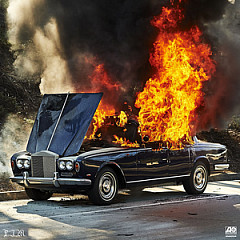
Feel It StillPortugal. The Man
"Feel It Still" by Portugal. The Man deals with lead singer John Gourley becoming a "rebel just for kicks" after having a daughter and settling down. "It's hard to be a punk when you're thinking about your baby daughter at home," he says.
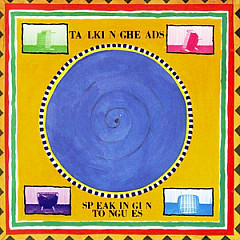
This Must Be The Place (Naive Melody)Talking Heads
"This Must Be The Place" is a rare love song by the Talking Heads, with a very personal lyric from David Byrne likely inspired by the woman who became his first wife.

Closer To FineIndigo Girls
The "Doctor of philosophy" in the Indigo Girls' song "Closer To Fine" is based on a teacher Emily Saliers had who had a poster of Rasputin on his door.
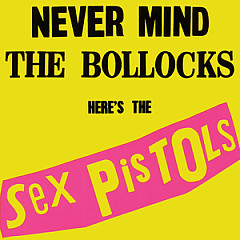
Pretty VacantSex Pistols
The riff for The Sex Pistols' "Pretty Vacant" was pinched from a very unpunk song, the ABBA ballad "S.O.S."
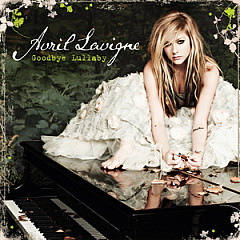
Black StarAvril Lavigne
Avril Lavigne has a perfume named after her song "Black Star." It smells much better than her Sk8er Boi scent, which reeks of Axe body spray and road grime.
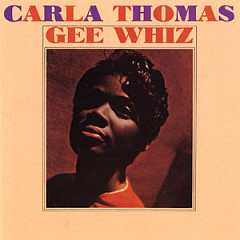
Gee Whiz (Look At His Eyes)Carla Thomas
Carla Thomas became the first woman to achieve a Top 10 hit on the Hot 100 with a song she wrote herself when "Gee Whiz (Look At His Eyes)" reached the chart's top tier in 1961. Thomas was just 16-years-old when she penned it.
Editor's Picks
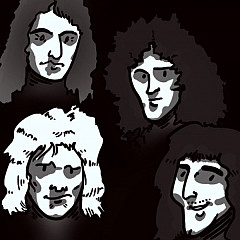
QueenFact or Fiction
Scaramouch, a hoople and a superhero soundtrack - see if you can spot the real Queen stories.
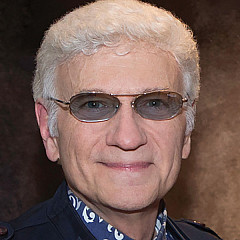
Dennis DeYoungSongwriter Interviews
Dennis DeYoung explains why "Mr. Roboto" is the defining Styx song, and what the "gathering of angels" represents in "Come Sail Away."
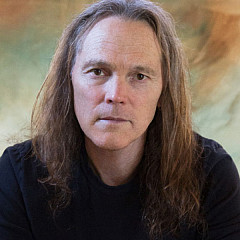
Timothy B. SchmitSongwriter Interviews
The longtime Eagle talks about soaring back to his solo career, and what he learned about songwriting in the group.
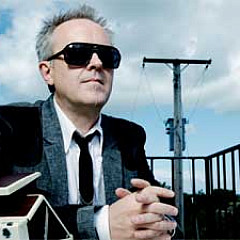
Howard JonesSongwriter Interviews
Howard explains his positive songwriting method and how uplifting songs can carry a deeper message.
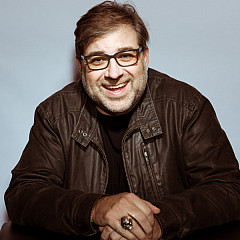
Barry Dean ("Pontoon," "Diamond Rings And Old Barstools")Songwriter Interviews
A top country songwriter, Barry talks about writing hits for Little Big Town, Tim McGraw and Jason Aldean.

